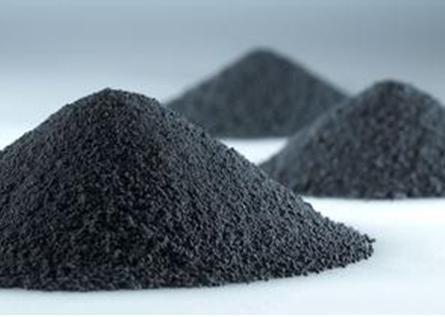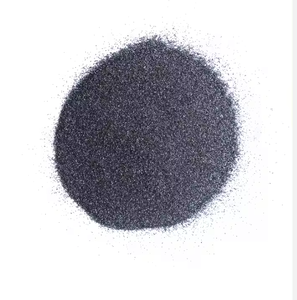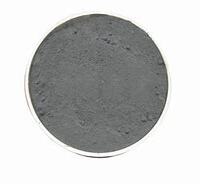Overview of XXX
Zirconium Carbide (ZrC) is an extremely hard and refractory ceramic material composed of zirconium and carbon atoms. It belongs to the family of transition metal carbides, known for their high melting points, exceptional hardness, and impressive chemical stability. Zirconium carbide offers unique properties that make it suitable for demanding environments where high temperatures, wear resistance, and corrosion are significant concerns.
Features of Nano Zirconium carbide ZrC powder
-
High Melting Point: Zirconium carbide has an incredibly high melting point of approximately 3530°C, making it one of the most heat-resistant materials.
-
Exceptional Hardness: With a Vickers hardness rating around 2200 Hv, ZrC is harder than most steels and many other ceramic materials, providing excellent wear resistance.
-
Oxidation Resistance: Forms a protective oxide layer when exposed to oxygen, which prevents further oxidation, enhancing its high-temperature performance.
-
Chemical Stability: Resistant to most acids, except for hydrofluoric acid, and shows excellent resistance to corrosion from alkalis and salt solutions.
-
Thermal Conductivity: Exhibits good thermal conductivity, which aids in heat dissipation and is beneficial for applications involving high heat loads.
-
Nuclear Application Suitability: Zirconium carbide’s low neutron absorption cross-section makes it attractive for use in nuclear reactor components.

(Nano Zirconium carbide ZrC powder )
Parameters of Nano Zirconium carbide ZrC powder
The “ZrC” used in nano Zirconium carbide (N-ZrC) powders is likely a specific compound that provides different properties compared to other types of ZrC powders. The exact name and structure of this compound may not be publicly known, but it can be assumed to have unique crystallographic and mechanical characteristics that set it apart from other ZrC powders.
Some possible factors that could influence the parameter values for a particular ZrC powder include:
1. Size: Different sizes of ZrC powders can exhibit different thermal stability, mechanical properties, and electrical conductivity. The size of the powder can affect its volume fraction, which in turn can influence the material’s physical and chemical properties.
2. Composition: The composition of the ZrC powder can affect its electronic structure and optical properties. For example, the presence of impurities or dopants can alter the bandgap and electronic conductivity of the powder.
3. Manufacturing process: The manufacturing process of ZrC powders can also impact their parameters, such as particle size, microstructure, and purity.
4. Applications: The intended application of the ZrC powder can also influence its properties. For example, it may require ZrC powders with higher melting points or lower temperatures of application to ensure compatibility with the desired operating conditions.
To obtain more accurate parameter values for a particular ZrC powder, it would be necessary to consult literature on the topic, experimental data, and industry standards. The specific powder you’re referring to should be obtained through standardization tests or quality control processes.

(Nano Zirconium carbide ZrC powder )
Applications of Nano Zirconium carbide ZrC powder
-
Nuclear Industry: Used in fuel element cladding, control rods, and other reactor core components due to its high-temperature stability and low neutron absorption.
-
Ceramic Cutting Tools: Incorporated into cutting tool materials to enhance their wear resistance and performance in machining hard materials.
-
Heat Exchangers and Furnace Components: Ideal for high-temperature applications due to its thermal stability and corrosion resistance.
-
Wear-Resistant Coatings: Applied as coatings on metal parts subject to severe wear or erosion, such as pump impellers and valve components.
-
Aerospace: In high-temperature and high-stress applications within jet engines and spacecraft due to its thermal and mechanical properties.
-
Chemical Processing Equipment: Components in contact with corrosive chemicals where resistance to both wear and chemical attack is crucial.
Company Profile
MyCarbides is a trusted global chemical material supplier & manufacturer with over 12-year-experience in providing super high-quality carbides and relative products.
The company has a professional technical department and Quality Supervision Department, a well-equipped laboratory, and equipped with advanced testing equipment and after-sales customer service center.
If you are looking for high-quality carbide materials and relative products, please feel free to contact us or click on the needed products to send an inquiry.
Payment Methods
L/C, T/T, Western Union, Paypal, Credit Card etc.
Shipment
It could be shipped by sea, by air, or by reveal ASAP as soon as repayment receipt.
FAQs of Nano Zirconium carbide ZrC powder
Q: How is Nano Zirconium carbide ZrC powder produced?
A: Nano Zirconium carbide ZrC powder is typically synthesized through carbothermal reduction of zirconium dioxide (ZrO2) with carbon at very high temperatures.
Q: Is Nano Zirconium carbide ZrC powder biocompatible?
A: While zirconium itself has good biocompatibility, specific studies are needed to determine the biocompatibility of zirconium carbide for medical applications.
Q: How does Nano Zirconium carbide ZrC powder compare to tungsten carbide in terms of hardness and thermal properties?
A: Tungsten carbide (WC) is slightly harder than zirconium carbide and has a higher melting point, making WC more commonly used for applications requiring extreme hardness and heat resistance.
Q: Can Nano Zirconium carbide ZrC powder be machined or shaped easily?
A: Due to its extreme hardness, zirconium carbide is challenging to machine using conventional methods. It is typically formed through powder metallurgy techniques, sintering, or used as a coating applied by thermal spray or CVD/PECVD processes.
Q: What is the main advantage of using Nano Zirconium carbide ZrC powder in nuclear applications?
A: Its low neutron absorption cross-section and high-temperature stability make it an ideal material for components in nuclear reactors, minimizing interference with nuclear reactions while maintaining integrity under extreme conditions.

(Nano Zirconium carbide ZrC powder )





